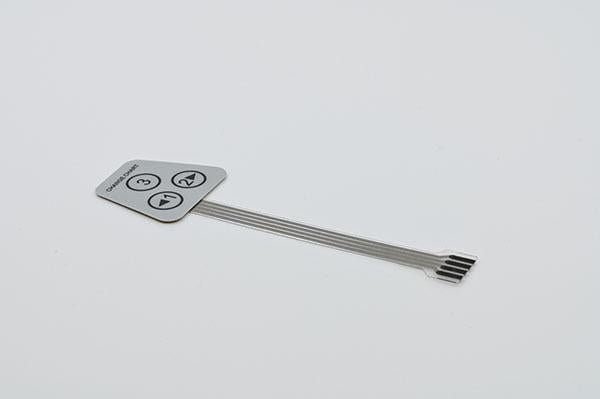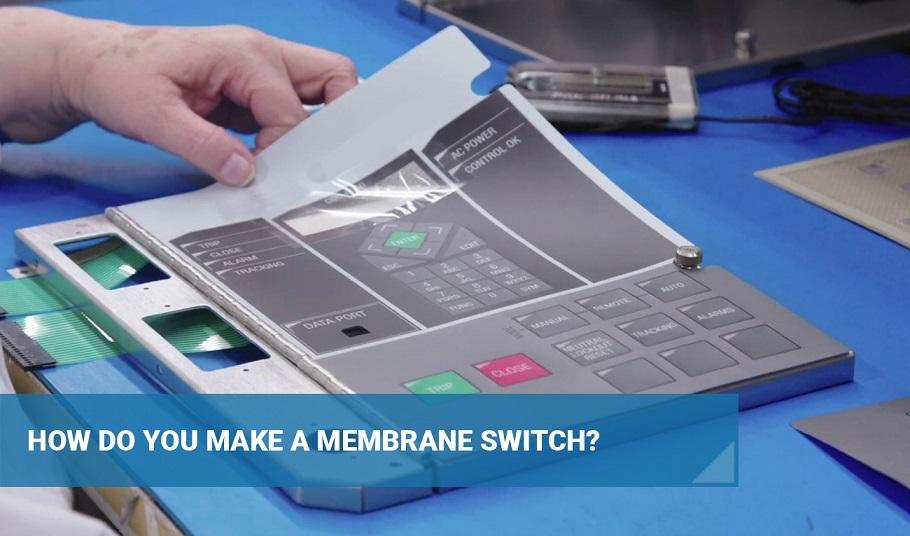Explore Different Types of Membrane Switch Technologies for Your Demands
Explore Different Types of Membrane Switch Technologies for Your Demands
Blog Article
Recognizing the Capability of Membrane Layer Switches for Individual Interface Gadget
The capability of membrane changes stands for a substantial improvement in user interface layout, combining effectiveness with aesthetic convenience. As industries increasingly focus on user experience, recognizing the subtleties of membrane switch innovation comes to be important.
What Are Membrane Layer Buttons?
Membrane buttons are innovative interface devices that facilitate user interaction with digital equipment. These versatile parts include multiple layers, consisting of a visuals overlay, spacer, and a printed circuit layer. The style enables a smooth combination into various electronic gadgets, boosting both the aesthetic and practical aspects of interface.
Membrane layer buttons are generally used in a vast array of applications, from household devices to commercial machinery and clinical devices. Their building and construction usually features a slim account, making them an excellent choice for compact designs. The responsive comments offered by these buttons can be crafted to meet particular individual choices, making sure reliable communication in between the customer and the gadget.
Longevity is an additional considerable advantage of membrane buttons, as they are immune to dust, dampness, and chemicals, which boosts their lifespan sought after atmospheres. Furthermore, these buttons can be tailored in regards to shape, size, and visuals design, enabling branding and user-specific features. On the whole, membrane layer changes stand for a functional solution for enhancing customer experience in electronic devices, combining functionality with aesthetic appeal in a reliable manner.
Exactly How Membrane Layer Switches Work
Operating on an uncomplicated concept, membrane changes use a split building to sign up individual input successfully. Each button includes multiple layers, including a published circuit layer, a spacer layer, and a top visuals layer, which are designed to work with each other perfectly. When an individual presses the leading layer, it presses the spacer layer, bringing the conductive components of the circuit layer right into contact with each various other.
This get in touch with develops a shut circuit, signifying the tool to carry out a specific function. The style allows for various configurations, consisting of responsive feedback, which can improve the customer experience by supplying a physical experience upon activation. The materials used in membrane switches often consist of adaptable substrates, such as polyester or polycarbonate, which make certain resilience and strength versus wear and tear.

Secret Advantages of Membrane Layer Switches

One more considerable advantage is their compactness. Membrane switches are thin and lightweight, which makes it possible for manufacturers to save room in their gadgets without giving up performance. This function is especially beneficial in applications where weight and quantity are important factors to consider.
Additionally, membrane switches are immune to dirt, wetness, and chemicals, enhancing their toughness. This strength expands their lifespan and decreases the demand for frequent substitutes, resulting in price savings over time.
Furthermore, the responsive feedback supplied by membrane layer switches can be optimized to improve individual communication. They can consist of functions such as raised switches or distinct clicks, improving usability and individual experience.
Applications Across Industries
Interface tools discover this info here using membrane buttons are widespread in a vast selection of sectors, showcasing their versatility and capability. Membrane Switch. In the clinical field, membrane switches are indispensable to gadgets such as analysis devices and person tracking systems, where their longevity and convenience of cleansing are crucial for maintaining health requirements. Similarly, in the automobile industry, these switches are utilized in control panel controls and infotainment systems, supplying a smooth and modern-day interface for individuals.
Additionally, the consumer electronics sector gain from membrane buttons in home appliances and portable devices, where compact design and user-friendly user interfaces enhance customer experience. Industrial applications also leverage membrane switches over for control panels in machinery and automation systems, highlighting their robustness and resistance to extreme settings.
In the aerospace and protection industries, membrane buttons are utilized in cockpit controls and tools, where reliability and performance under severe problems are critical. In addition, the gaming market progressively includes membrane switches in controllers and game equipments, contributing to an interesting customer experience. Generally, the versatility of membrane layer switches over enables their widespread use throughout various markets, underscoring their value in modern-day interface design.
Future Patterns in Membrane Switch Technology

Furthermore, the use of innovative materials, such as polycarbonate and polyester movies, is expected to rise, offering improved resilience and resistance to environmental stressors. These materials add more info here to the total longevity of membrane buttons, making them appropriate for harsher industrial applications.
In addition, the unification of wise modern technology, including IoT connectivity, will certainly enable membrane layer switches to connect with other tools and systems, helping with a much more interactive customer experience. This trend lines up with the expanding need for clever tools throughout various industries, from you could try this out health care to customer electronic devices.
Last but not least, personalization alternatives are anticipated to increase, allowing manufacturers to create bespoke services customized to certain individual needs and choices. These developments will certainly position membrane layer buttons as vital components in the development of individual interface innovation.
Conclusion
In verdict, membrane switches represent an essential innovation in user interface technology, using a dependable and functional solution for diverse electronic applications. As developments in material science and touch noticing modern technologies continue, the capability and applicability of membrane buttons are anticipated to expand, strengthening their importance in modern-day digital devices.
Report this page